Text
Banded linsang (Prionodon linsang)
thinking about creatures.
7K notes
·
View notes
Note
Hi hello any idea what this little guy is? The only source I found is pinterest and it just says civet but not what kind
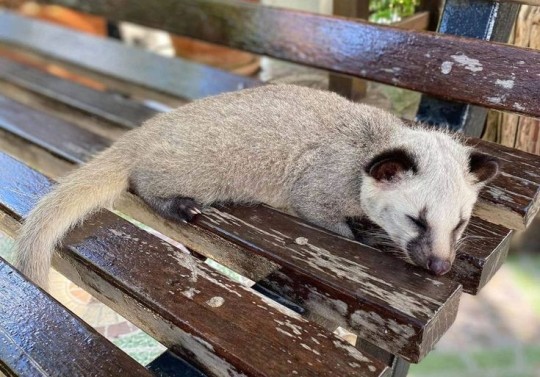
I do! That’s a masked palm civet (Paguma larvata)!
Sure, this particular guy doesn’t have much of a mask. But that’s because masked palm civets come in an impressive variety of coat colors! Here are a few of them:

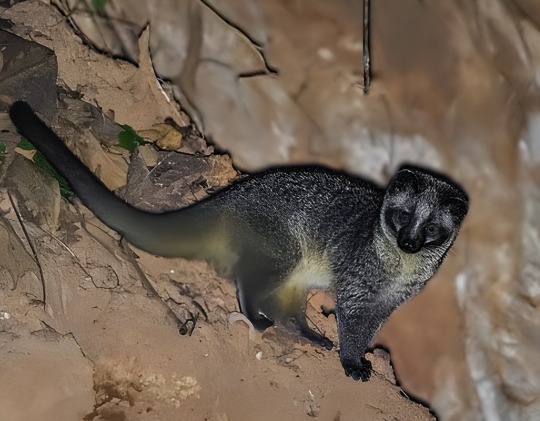


As of now, six different subspecies of masked palm civet are formally recognized, but as many as sixteen have been described! So this little guy just happened to be born with a particularly light coat, especially on the face. I wouldn’t rule out them being partially leucistic!
162 notes
·
View notes
Text

I’ve got good news for you! The rabies virus evolved to affect warm-blooded animals and requires temperatures around 36°C to 38°C (97°F to 100°F) to thrive. Which is the body temperature of your average placental mammal. Marsupials, however, have average body temperatures in the range of 35°C (95°F) and monotremes even lower, at 31°C (87°F)!
This means that marsupials (even your average virginia opossum) are too cool to get rabies. Literally! It’s not impossible for them to get infected with it and there have been documented cases, but it’s very, very rare. Not only that, but also since most mammals in Australia are marsupials and monotremes, the rabies virus is considered practically inexistent over there! So the Australian possums from that post have zero chances of giving you rabies. Being placental mammals, it’s much more likely that a colugo would get infected with it, but by what I’ve been able to gather from some cursory research, it’s not common for them to be exposed to the virus. I haven’t been able to find a single documented instance.
I’ve also got some bad news, though: you still can’t hold them because they’re wild and have teeth and claws. 😔 None of these animals grow very large but as someone who has been badly bitten by a very angry rat once, small animals ≠ painless bites.
#In case anyone’s wondering the rat bit me because her owner gave me her *newborn babies* to hold without warning#Her maternal instincts kicked in and she bit the shit out of one of my fingers. Her teeth fully pierced my fingernail.#It took a few days for it to stop hurting enough for me to actually use it again
115 notes
·
View notes
Text
That’s a tiger quoll (Dasyurus maculatus), the second largest non-extinct carnivorous marsupial on earth! Despite this impressive title, they’re not what we humans consider particularly big when we think of carnivores, though. In fact, they’re around the same size as a domestic cat, with males weighing about 3.5 kg (7.7 lbs) on average.
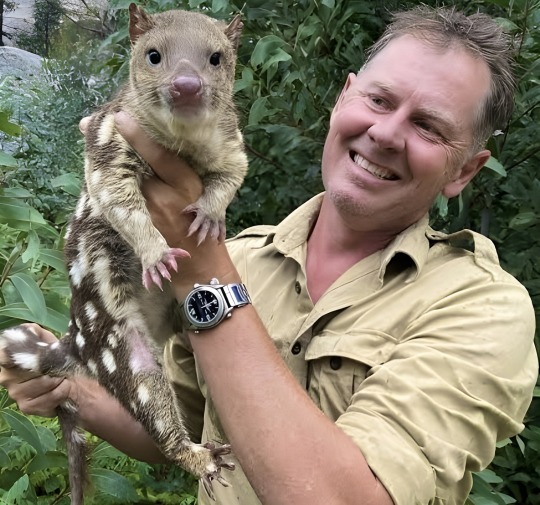
But being on the smaller side doesn’t stop these guys from being fierce. Tiger quolls will hunt and eat anything from insects and crawfish to snakes and lizards and even small wallabies and wombats! Not only that but, relative to their body size, tiger quolls have the second strongest bite force of any carnivore mammal, losing only to Tasmanian devils!
Also, here’s what their cool catchphrase sounds like in real life:
youtube
haaah? what the hell is this? some sort of damn beast... it's kind of badass

6K notes
·
View notes
Text
Exactly that! Marsupials who have membranes between their limbs that allow them to glide short distances, an example of convergent evolution with placental flying squirrels and anomalures. There are three kinds of gliding possums:
The ones in the genus Petaurus, which includes eight different described species of gliding possums so far. You might be familiar with one of its members: an animal sometimes kept as an exotic pet known as “sugar glider”. Which, as we would find out four years ago, aren’t actual sugar gliders but Krefft’s gliders, as former subspecies of sugar gliders were studied more closely and determined to be distinct species.


Pictured: the squirrel glider (Petaurus norfolcensis) and the yellow-bellied glider (Petaurus australis). Most Petaurus gliders have a similar look, with the exception of the brown yellow-bellied glider, who’s also the biggest species in the genus.
The ones in the genus Petauroides, which includes three species of possum gliders known as greater gliders. Just like with sugar gliders, they were also thought to be a single species until 2020! They’re not very closely related to the possums in the genus Petaurus and are one of the largest gliding mammals on earth, growing to about the size of a domestic cat. They’re also, in my opinion, almost impossibly cute.

Pictured: mom and baby northern greater glider (Petauroides minor). Greater gliders have an impressive variety of coat colors, ranging from fully white to fully black.
And the ones in the family Acrobatidae, which contains two genera with a single species each: the feathertail glider, who is the world’s smallest gliding mammal and the feather-tailed possum. I have no idea why there’s a hyphen in feather-tailed but not in feathertail. Kinda bothers me.


Pictured: Feathertail glider (Acrobates pygmaeus) and feather-tailed possum (Distoechurus pennatus).
Sadly, gliding possums are only found in Australia and New Guinea, which means that no marsupial of the Americas found it advantageous to learn to glide, including the animals we know as opossums (family Didelphidae). Two separate kinds of Didelphidae opossums evolved adaptations for swimming that make them as good at it as otters, though, and I think we should praise them for that.
Seriously they release new animals every week what the hell is this
13K notes
·
View notes
Text
Sunda flying lemur (Galeopterus variegatus), also known as the Malayan colugo, more specifically their red morph! Animals who have gone through domestication aside, it’s somewhat rare to see animals having significant populations of varying coat colors, since they’ve evolved their standard coats to better suit their environment and too unusual colors make it harder for them to blend in. There are exceptions to this rule, though, and the Malayan colugo is one of them. They can have either predominantly brownish-gray coats or predominantly red coats!


In fact, it’s not uncommon to see brown moms carrying red babies and vice-versa.


This species also greatly varies in size depending on their location! Malayan colugos from the Sunda Shelf mainland can be 20% bigger than the ones found in central Laos and other neighboring islands, despite being genetically identical otherwise!
But there are other aspects that make colugos incredibly interesting animals. For one, despite what the name “flying lemur” implies, they’re not lemurs at all. They’re their own thing! The two existing colugo species, the Malayan colugo and the Philippine colugo, are the only members of the order Dermoptera.
Another thing their name gets slightly wrong is that colugos cannot fly. They can, however, glide with the aide of a membrane they have between their limbs, like flying squirrels and gliding possums. Unlike these animals, though, their membranes are mostly hairless, resembling bat wings if you see them from below:

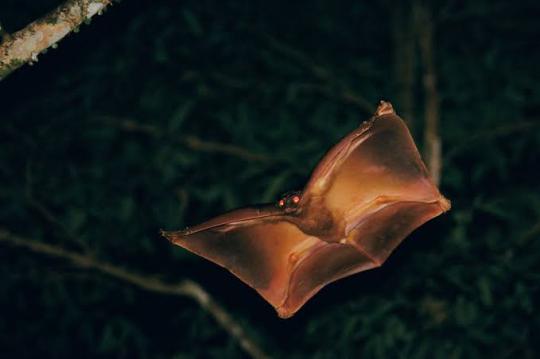
Because of that, they were once thought to be related to bats. With the advance of science, though, they were discovered not to be closely related to them at all. In fact, bats are more closely related to artiodactyls, such as horses, cows and whales than they are to colugos!
So then, who are colugos most closely related to? Well, I happen to have a picture of a colugo hanging out with one of its closest evolutionary cousins right here:

This guy. But not just this guy! I’m also related to the colugo, and so are you and every other primate! Recent genetic findings propose that there are two orders in the mirorder Primatomorpha: Primates and Dermoptera! This means that, other than our very close simian, tarsier, lorisid, galago and lemur cousins, there’s no other creature on earth who’s more like us than these cute little weirdos.
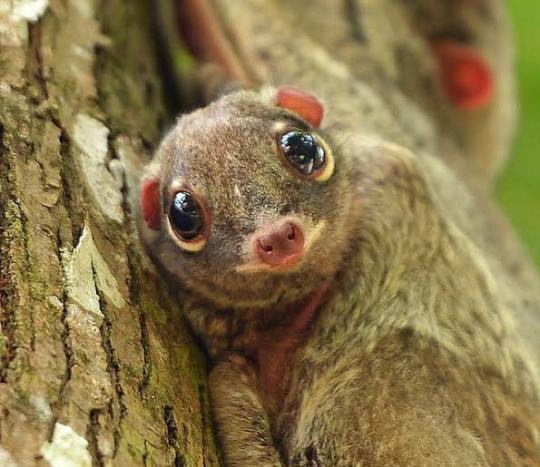
Seriously they release new animals every week what the hell is this
13K notes
·
View notes
Text
Horse (Equus ferus caballus)
hey if ur a gimmick account reblog this so i can follow you
699 notes
·
View notes
Note
Correction, Zebu were not domesticated 250,000 years ago, that is absurd, it was domesticated around the same time as taurine cattle.
Oops, that was one hell of a typo! 300 000 to 250 000 years ago was when the auroch split into two subspecies: Bos taurus taurus, who were more adapted to colder climates and Bos taurus indicus, adapted to hotter climates! Zebu were domesticated around 8000 to 9000 years ago!
I was going to include this tidbit in my initial post but I thought it’d make it a little too long so I edited it out in favor of just when they were properly domesticated, but apparently I left the original numbers in, heh. Good catch, I’ll edit it!
40 notes
·
View notes
Text
Domestic cattle (Bos indicus x Bos taurus or Bos taurus indicus x Bos taurus). More specifically, the red variety of the Brahman breed. Their looks are due to the breed being mainly established from zebu cattle, although they do have some taurine ancestry too. Here’s what they look like when they’re not in motion:

The weird scientific naming is due to the fact that there’s still debate on whether zebu and taurine cattle should be considered two separate species or subspecies of the same animal, given that both were the result of the domestication of the extinct aurochs (Bos primigenius), but were domesticated in different parts of the world and time periods, (zebu cattle were domesticated 8000 to 9000 years ago in South Asia ago and taurine cattle were domesticated around 10 000 years ago in northern Syria), which resulted in animals with very different looks and traits. There’s still some debate too on whether Sanga cattle should be considered the results of a third, separate domestication of the wild aurochs or if they’re the descendants of early zebu, taurine and/or aurochs crosses!
7K notes
·
View notes
Note
hi there!
Usually I'd keep out of these things, but the recent serval you ID'd seems to be wearing a collar like a pet, even though they're very much unfit to be kept as pets. If you could add a note to posts like that about not keeping wild animals as pets, that'd be much appreciated :)
Oh, that’s a good idea! I’m very much not a fan of big cats and wild animals being kept as pets myself either. I’m going to try and make it a habit to always add a little disclaimer to posts showing such situations. Thank you for your suggestion!
23 notes
·
View notes
Text
Serval (Leptailurus serval). You can’t get much more cat than that!
#Reminder that wild animals do not make good pets!#Wild animals should only be kept in zoos and other conservation organizations by trained professionals.#Servals
21K notes
·
View notes
Text
Hi! This is our good old friend, the rock hyrax (Procavia capensis)! You might know them from that one TikTok of the three little animals climbing all over a person to get a sip of their tea. Those are the exact same species of hyrax as this guy here! Except for the fact the ones in that video are babies and this one’s a grown adult.
Here’s a fun fact about hyraxes: their closest living relatives are dugongs, manatees and elephants! Yes, it’s kind of hard to see it at first, but if you look more closely, you’ll realize they definitely share some family resemblance when it comes to the very unique trait of having incisors for tusks. In all other mammals with tusks, they’re their canine teeth instead!



Sadly, only dugongs still have their little tusks. Manatees lost theirs during their evolutionary process. As adorable as they are, they weren’t particularly necessary for grazing underwater.
Manatees kept another vestigial trait from back when they were land mammals that dugongs have lost, though: toenails! And as it turns out, toenails are another thing they have in common with their elephant and hyrax cousins:



Both elephants and hyraxes have one extra toenail in their front feet compared to their back feet. Manatees do not because sirenians don’t have hind limbs at all, just vestigial pelvic bones. No need for them when you have a paddle for a tail!
6K notes
·
View notes
Text
I’ve received all of your boops and I’m trying my best to boop everyone back at least once! My boops come from my art blog @tetedetele :)
23 notes
·
View notes
Note
*I walk in, holding what appears to be a Sherlock Homes pipe in my mouth. I analyze the featureless wooden animal in front of me wordlessly. A while later, I finally speak*
A bipedal posture. Big, long feet, but small arms held in front of its body, pointing down. One look at this, and one could exclaim “This is clearly a kangaroo!”
However, let’s not be hasty. The body plan suggests macropod, yes. This is an animal who’s clearly comfortable in an upright position and might be able to move by hopping using its powerful hind legs. But kangaroos usually have heavy, straight tails to help them maintain their balance. The coily tail this animal has suggests something different from what kangaroos can do: an unique form of counterbalance for fast locomotion on rocky hills and cliffs! After all, chinchillas and viscachas have them for a reason.
Finally, let’s look at the rest of its features: small, pointy ears, a stocky body, a pointy snout. Based on all these characteristics, there’s only one conclusion one can come to:

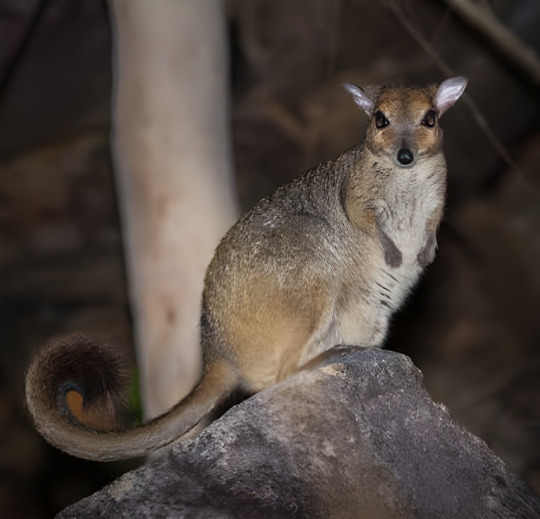
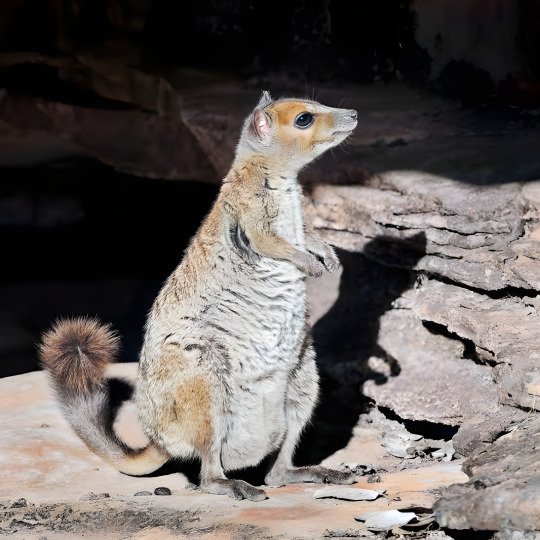
The Monjon (Petrogale burbidgei)! The smallest of rock wallabies, at only 30 cm (11 in) tall and weighing just 1,3 kg (2,8 lbs)! This elusive creature has a very limited range, restricted to a very small part of the coastal Kimberly region in West Australia and the nearby islands of the Bonaparte archipelago. This led them to only be discovered in 1976!
*I take one final drag of my pipe. You realize I’m actually just blowing on one of these:*

What animal is this please help
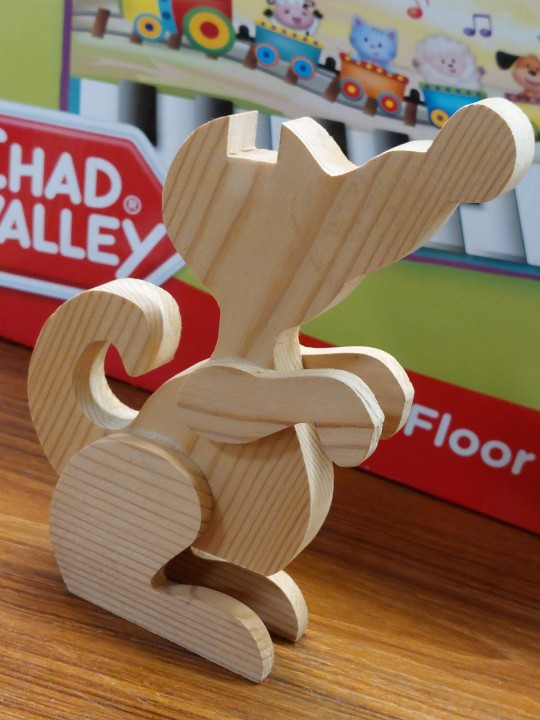
I'm only accepting wrong answers for this one.
572 notes
·
View notes
Text
Pyrenean desman (Galemys pyrenaicus). They share the family talpidae with moles and shrew-moles. Unlike their cousins, though, desmans decided they liked swimming better than digging and became semiaquatic animals, just like otters!
turnips? do you have any turnips

5K notes
·
View notes
Text
Pronghorn (Antilocapra americana). Despite their deer or antelope-like appearance, these ruminants aren’t closely related to either of these animals. In fact, being the only living members of the family Antilocapridae, there’s simply no living animal today that can call the pronghorn a close relative!
They’re distantly related to giraffids (giraffes and okapis), which they have split away from during the early Miocene. That’s before the ancestors of humans split away from the ancestors of chimpanzees!
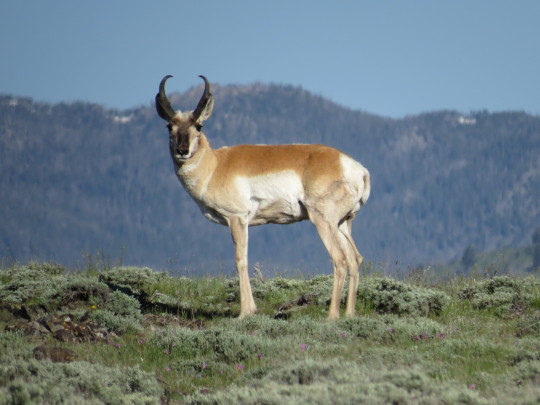

I never get enough of these dudes
(Whisky Peak Mountain, WY, 2023)
638 notes
·
View notes
Text
I decided to tag it as “growths” instead! I’ll be using this tag for any posts I make or reblog containing descriptions or images of conditions that causes unusual things to grow on living tissue, such as whales with parasitic barnacles on their bodies or rabbits affected by the Shope papilloma virus. Feel free to blacklist it if this particular phenomenon bothers you!
21 notes
·
View notes